
Zwift Racing Tips to Ride Smart
To ensure you are fully prepared for your next Zwift race we have put together our Njinga Pro Tips to ride smart on Zwift.
No matter if you are new to racing or have been racing on Zwift for a while, we have something for everyone!
Read on below for our 15 top tips and things to consider.
P.s Don't worry, after racing a few times, all these tips will become second nature so don’t be overwhelmed by them all.
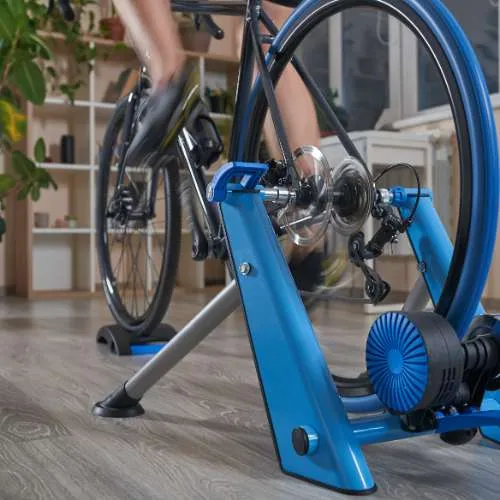
1. Review Your Trainer Difficulty Settings
In the Zwift Menu setting, you can adjust trainer difficulty, which controls how dramatic hills feel if you use a smart trainer. If you set trainer difficulty to 50 percent, then a 10 percent gradient climb will feel like a 5 percent gradient, and if you set trainer difficulty to 0 percent then you won’t feel anything at all when the gradient changes in-game.
This means that on a lower setting, you will not have to change gear as much. However, the watts you need to generate are the same, so this doesn’t make the gradient easier in terms of how many watts you need to push out to go at a certain speed up an incline for instance.
NJINGA PRO TIP:On flatter courses or time trials, where you have steady power for longer durations, lower your trainer difficulty so that you're less disrupted by the gradient change.
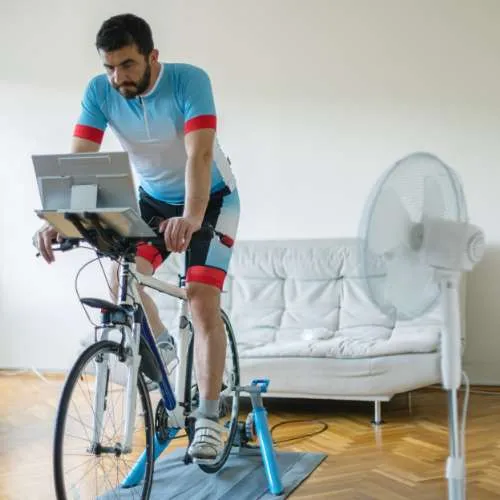
2. Reduce Body Heat
When you’re cool, you’ll sweat less, and your heart rate will stay lower for longer, so fatigue will set in less quickly. Even a small change in the temperature of your body will create a large change in the amount of power you produce.Overheating can cause a reduction in your power by as much as 20 to 30 watts, so it’s critical to keep the body temperature down.
NJINGA PRO TIP: Train in a cool room, open the windows to increase airflow, and use a big fan.
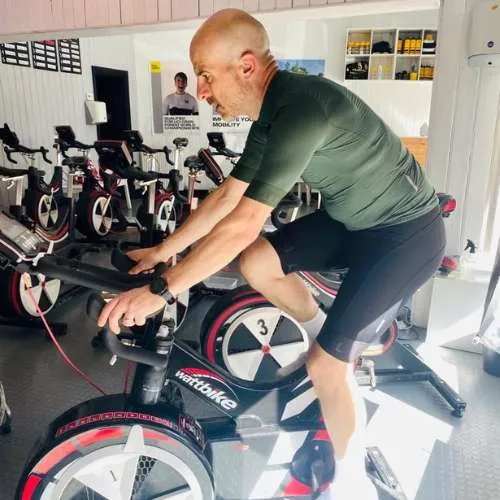
3. Warm-Up
Most Zwift races start out at a really hard pace for 2-4 minutes, so you need to prepare your body for the hard effort at the start of the race. We don’t advise getting on your trainer a few minutes before the start time and going straight into the race pen.
Give yourself 15 to 20 minutes before racing to get your blood flowing.
NJINGA PRO TIP.
Do our 20-minute warm-up in advance of each race which is:
- 10 minutes low to mid-Zone 2 (60-65% of FTP) at 90 cadence,
- 1 minute 95 cadence,
- 1 minute 100 cadence,
- 1 minute 105 cadence,
- 1 minute 110 cadence,
- 15 seconds 120 cadence,
- 1 minute 90 cadence,
- 6 seconds 120+ cadence (max power),
- 1 minute 90 cadence,
- 6 seconds 120+ cadence (max power),
- 4 minutes 90 cadence (relax and recover).

4. Be Ready for the Start
Zwift races always start hard, and fast! You want to be pedalling well above your FTP from 10-20 seconds before the countdown hits zero and expect to hold that effort for 2-4 minutes. Find a wheel, dig in, react to any gaps, and trust that it will settle down.
If you do miss an early split, find a group to work with, chalk it up to experience, and keep riding hard.
NJINGA PRO TIP: Zwift events open 30 minutes before the start time. The earlier you go into the pen the closer to the start line you will be ahead of the race. You can warm up in the pen (You won’t go anywhere).

5. Learn how to Ride in a Group
One of the most important — and challenging — skills to develop is learning how to move around in the peloton, which many riders on Zwift call the ‘blob’.
Much like racing outside, if you’re not moving up, you’re probably moving back. And unlike outside, coasting is almost never a possibility.
NJINGA PRO TIP: You must stay on the gas. If you’re a sprinter on a climb think about moving to the front and working your way backwards through the peloton (blob), rather than starting at the back and letting the climbers spit you out straight away. Also, watch for close the gap warning of how many metres you are away.
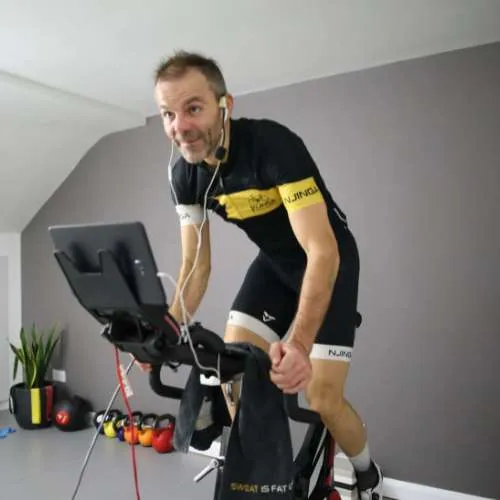
6. Learn how to Climb
Most climbs on Zwift still have the benefit of the draft, so conserve precious energy and let others lead. Since most of the racing courses on Zwift are short and punchy climbs it will usually settle down at the top.
NJINGA PRO TIP: The key is to follow others as best as you can. If you are caught out at the front of the peloton (blob) you can use this time to recover, or if you are chasing the breakaway or lead peloton you can keep the power on over the top of climbs and get back into the group as the leaders slow down.
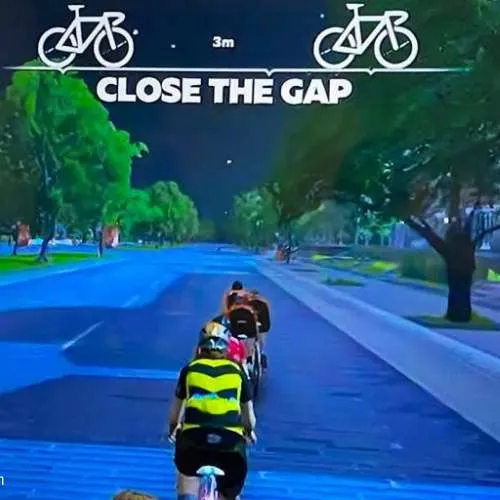
7. Save your Energy
Just like racing ‘in real life’, it’s often not the rider that puts out the biggest wattage that wins but the one that races smartest. Sit on the wheels and minimise spending time with your nose in the virtual wind. This takes a bit of practice and, to avoid pinging off the front and then shooting out the back, changes in pressure on your pedals must be subtle.
NJINGA PRO TIP: If you are drafting behind someone who is pulling at 300 watts, you will stay in their draft if you do 250 watts, but you may also be able to stay in the draft at ~225 watts. So, try to be subtle in the change of pressure on the pedals so as not to push unnecessary watts.
Most Zwift races come down to a sprint and, apart from on big climb finishes, it’s very rare that a solo breakaway will stick. There’s normally a whittling down process as riders get spat from the lead group and, in most cases, if you can hang in there and be patient, you’ll be in with a shout at the end.

8. Use Your Power-Ups Wisely
The Power-ups available vary from race to race but they can play a decisive role in the outcome of races. The Power-ups you need to be aware of are:
- Aero Boost (Helmet): Makes you more aero for 15 seconds. Use on flats, descents, and for finishing sprints. It’s rare that a Zwift sprint is won without an aero boost so, if you get one, it can be worth holding it until the end of the race.
- Lightweight (Feather): Reduces your weight by 10% for 15 seconds. Use on climbs.
- Draft Boost (Van): Doubles the draft effect for 30 seconds. Use on flats and descents when you’re in a bunch or following another rider.
- Cloaking (Ghost): Makes you invisible to other riders for 10 seconds. Use to sneak off the front without other riders noticing. Please note this power-up is disabled within 200m of the finishing line.
- Burrito: Makes you un-draftable for 10 seconds. Use when attacking off the front of the bunch. This power-up will impact riders in a 2.5 metre radius.
- Steamroller: Decreases rolling resistance for 30 seconds so use when you hit the dirt or cobbles to match the feel of a road bike on a smooth road.
- Anvil: Makes you heavier by 50kg for 30 seconds to improve your downhill speed.
NJINGA PRO TIP: Depending on the course you are racing you might want to keep a power-up for later in the race. If you are racing a flattish course, with a guaranteed sprint at the end and you already have an aero power up you may want to consider if you want to keep this until the end of the race. Every time you pass under a sprint and KOM banner it will be potluck on which power-up you get…Use them wisely.
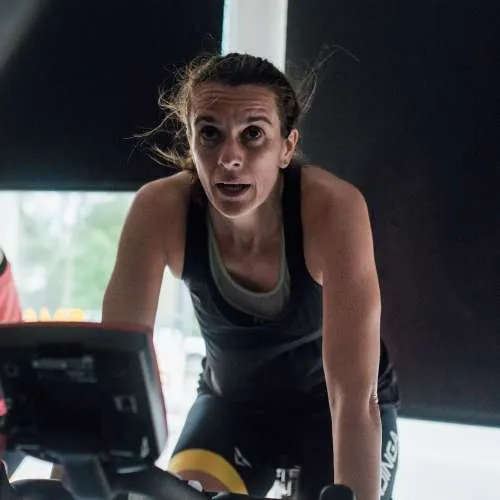
9. Learn how to Sprint
Focus on speed — not power — which comes down to position and timing in the final meters of a race. Focus on generating peak power in as few pedal strokes as possible.
NJINGA PRO TIP: When should you kick for the line? Consider how hard the race has been so far, how tired you are, how fast the bunch is going before the sprint, and who you’re racing. But generally, as with sprinting outside, the longer you can stay in the draft, the better off you are to unleash your sprint at the end.
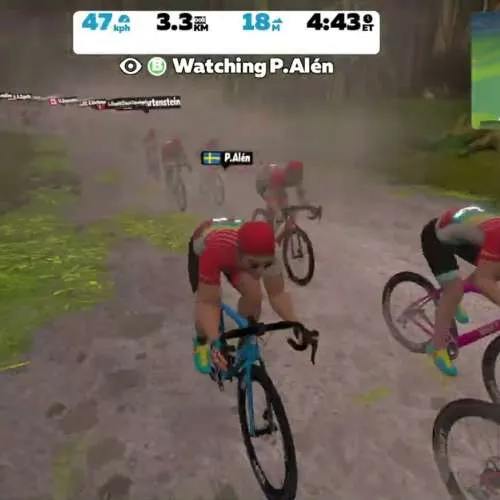
10. Attack Dirty
There are several dirt sections, and even though it's virtual riding, in the dirt, is different from riding on tarmac. Dirt has a higher rolling resistance on Zwift, so your smart trainers’ resistance will increase on dirt sections.
Another way to look at it: These dirt sections essentially behave like small climbs, with the added benefit of reduced visibility. If you’re feeling good and want to make an attack, consider the dirt.
This also gives you better visibility, because unless you’re near the front, you won’t be able to see more than a few bike lengths ahead in a large pack.
NJINGA PRO TIP: For visibility, you can also change the camera angle by hitting ‘9’ on your keyboard for an overhead view without dust.

11. Supertuck for Extra Rest
Supertucks on Zwift allow you to get a little recovery on the downhills without losing speed. If you’re on a long enough downhill section consider not pedalling if these 4 conditions are met:
- You’re traveling at least ~36MPH (~58km/hr)
- The decline is at least 3%
- Your power output is 10 watts or less
- You are out of the draft and not riding in a pack.
Zwift will put you into a “supertuck” position if all these conditions are met, which lets you coast down the hill fast. You come out of the supertuck once any one of these conditions is not met.
NJINGA PRO TIP: Know the course as you want to start pedalling again before the descent finishes or else you will lose the peloton (blob) and will have to accelerate hard to get back on to the group.

12. Do your Research on Zwift Insider
If you’re racing a lot on Zwift, you should consider bookmarking www.zwiftinsider.com which provides official details on all Zwift racing courses.
NJINGA PRO TIP: Knowing the course you are racing, the sprints, and all the hills can be an advantage in following the right attack mid-race, and not chasing down a decoy.
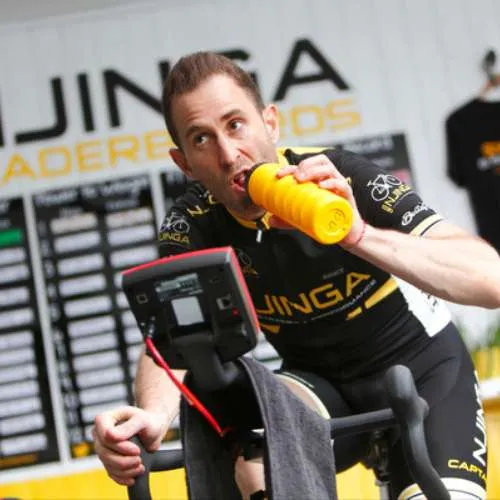
13. Fuel Right
Zwift racing is intensive, and you are working just under and above your threshold for the majority of the race. These types of races require you to be well-fuelled and ready. Depending on the length of your race and how much climbing is involved, you need to fuel up with some carbs in advance of the race.
If it’s a long hard race then think about having some complex carbs 3 hours beforehand like oat porridge with fruit and honey or granola with fruit and nut milk, etc.
For shorter 45min races then within 60mins of the start, you can have some simple carbs (high GI) that are more easily digested and can get into your bloodstream faster, so you don’t feel heavy at the start of the race. E.g., banana on a rice cracker, fruit smoothie, etc. Avoid nuts and other foods high in fat.
NJINGA PRO TIP: Make sure you are well hydrated before the start of the race and also have two water bottles with electrolytes in with you for the race itself. Plus, have some high GI simple carbs for energy during the race, like rice balls, dried fruit, gel bloc’s, gels, etc.

14. Bike Selection
Choosing the right bike, frame and wheelsets matters in certain races. Zwift offers a variety of bike frames and wheelsets and as you progress and achieve higher levels, you'll unlock faster bikes and wheels. We strongly recommend using these upgrades.
There are different types of frames available, such as Road, TT (remember, TT bikes can't draft), gravel, and mountain bikes. Each bike frame and wheelset is rated from 1 to 4 stars for aerodynamics and weight. More stars mean better performance.
NJINGA PRO TIP: When deciding on the best equipment for a race, think about the race route:
- If the route is very hilly with longer and steeper climbs you should opt for a lighter setup, including wheels with higher star ratings for weight.
- If the course is flat you should opt for a bike with more aero stars.
- If it is a gravel course, you should consider a gravel bike as this can make a considerable difference.
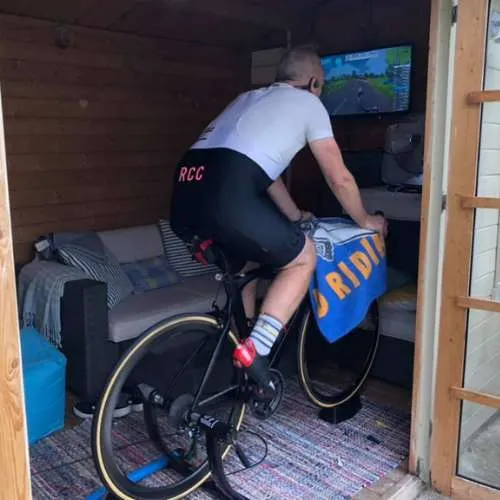
15. Enjoy It
The great thing about racing on Zwift is there’s always another race to enter. Above all, it’s a fun and motivating way to get a great workout so, enjoy it, don’t take it too seriously, and have fun trying different tactics and courses.
Ride On!
A special thanks to Njinga Race Managers for Zwift - Ali Burr (NJINGA CC) and Matt Drake (NJINGA CC), for their insight and race knowledge in putting this blog together.
Want to join Our Njinga Racing Team?
If you are interested in racing with NJINGA CC then contact us. NJINGA CC runs both men’s and women’s teams in the WTRL league across Cat A-D.
Need help to prepare for the next race season?
If you are interested in improving your racing performances, our Group Training Programmes may be of interest to you. We have seen great results from all our previous multi-week training programmes and they come with a 100% money-back guarantee if you don't see improvements.
Looking for more individual support and coaching?
Check out our 1-1 coaching option for expert guidance tailored to your specific objectives.
Join the Njinga Cycling Academy today to unlock a wealth of nutrition resources and recipes. You will also gain access to immersive on-bike training sessions, progressive training plans, off-bike training sessions plus bonuses.

